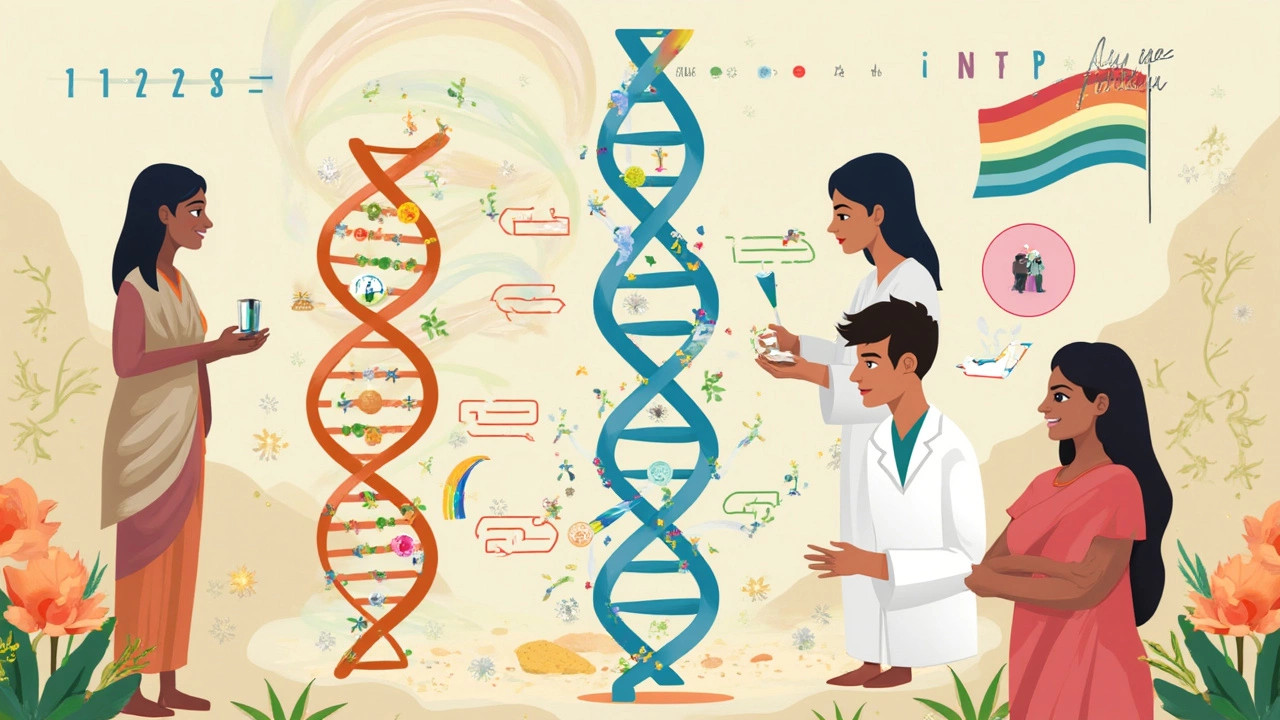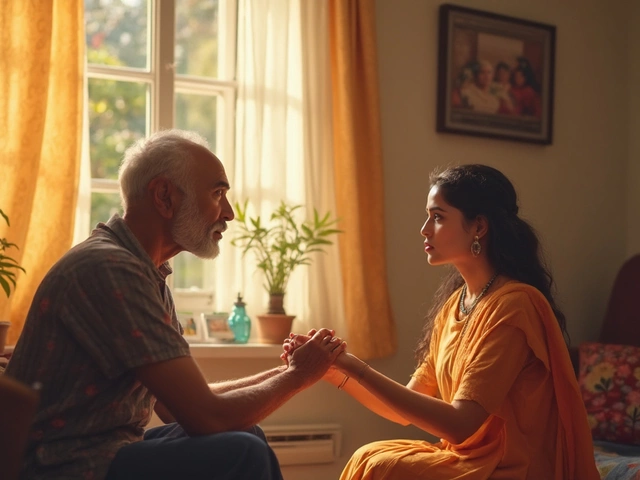Ever wondered if a baby born through IVF can actually look like both moms? This is probably one of the first questions couples ask, especially in same-sex female partnerships. There’s a lot of confusion here, partly because the science sounds complex and partly because emotions are involved.
Here’s what you really need to know: Only the genetic material from the egg and the sperm actually shapes a child’s physical features. So if one mom provides the egg, the baby can inherit her looks. The mom who carries the pregnancy (using the other mom’s egg) doesn’t pass down her DNA, but she does have a real effect on the pregnancy and the baby’s health through what’s called “epigenetics.” This stuff isn’t about eye color or dimples, though—it affects development and possibly some health traits, but not how much the baby looks like her.
If you’re two moms hoping for your child to resemble both of you, the truth is simple: unless you use new and still experimental “shared motherhood” techniques (like splitting genetic roles), the child’s features come from the egg provider and the sperm donor, not the mom who carries the baby.
That’s often a surprise. But there are ways to make the connection stronger—even if only one mom is genetically linked. Some couples swap roles for baby number two or match the donor’s features to the non-genetic mom. These decisions are personal and totally up to you.
- IVF with Two Moms: How Does It Work?
- Who Passes on the Genes: Egg, Sperm, or Both Moms?
- What Decides a Baby’s Looks in IVF?
- Options for Two Moms: Double Maternal Connection?
- Tips for Choosing and Bonding With Your IVF Baby
IVF with Two Moms: How Does It Work?
IVF for two moms boils down to using science to make a baby when both partners are women. In most cases, one mom provides the egg and the other carries the pregnancy, but how does it all actually come together in real life?
Here’s the standard process:
- Egg retrieval: One partner takes hormone shots to produce eggs. A doctor collects these eggs during a quick procedure.
- Fertilization: The eggs meet donor sperm in a lab. Here’s where fertilization actually happens, creating embryos.
- Embryo transfer: Once an embryo starts to grow, a doctor puts it inside the uterus of one mom (usually the one who will carry the baby).
Sometimes, both moms want a biological role. This is where something called reciprocal IVF comes in. One mom provides the egg, and the other carries the pregnancy, so both share in the process, even if only one passes on genetics.
The sperm always comes from a donor. Some couples use someone they know, others choose a donor through a clinic. Either way, it’s good to check what matters most to you, like medical history or looks.
Here’s a quick table showing different scenarios for two-mom IVF:
| Egg Source | Uterus | Genetic Connection |
|---|---|---|
| Partner A | Partner B | Partner A only |
| Partner B | Partner A | Partner B only |
| Partner A | Partner A | Partner A only |
| Donor (not either mom) | Partner A or B | Neither mom, just a physical connection |
Reciprocal IVF, where both moms play a key part, has gotten more popular in the last five years. In the US alone, IVF cycles for same-sex female couples have doubled since 2017. Clinics report that about 1 in 20 IVF cycles now involve lesbian couples, and that number keeps ticking up each year.
If you’re looking into IVF, be ready for tests, paperwork, and lots of planning. But for two moms, it’s totally doable, and clinics are getting better at making sure both of you feel involved throughout the whole process.
Who Passes on the Genes: Egg, Sperm, or Both Moms?
This question trips up just about everyone going through IVF. Here’s the real deal: only the egg and the sperm give a baby their actual genetic blueprint—the DNA that shapes everything from hair color to freckles to the way your nose looks. The egg is one mom’s, the sperm is from a donor (or a dad, in other setups), and those are the only two sources of classic genetic material.
If two moms are having a baby together using IVF, only the mom who gives the egg will pass down her genes to the child, alongside the donor or dad. The mom who carries the pregnancy (but doesn’t provide the egg) won’t pass on her DNA. Despite what you might have read, there’s no way for both moms to equally mix their DNA in standard IVF right now.
There’s a twist: the carrying mom does have a special role thanks to something scientists call "epigenetics." Her body influences how some of the baby’s genes get turned on or off during pregnancy. But these changes affect things like future health and how some traits show up—they don’t actually change the basic features the baby gets from the egg and sperm.
- Egg provider – gives half the DNA, so shapes overall appearance and traits.
- Sperm provider – gives the other half of the DNA, so their genes are just as important.
- Carrying mom (if not the egg donor) – plays a key role in the baby’s growth and development but not looks.
For couples that want both moms involved at a gene level, research is happening but it’s not widely available or proven yet. For now, one mom passes on physical traits, while the other can still give the baby a healthy start and strong bond during pregnancy.

What Decides a Baby’s Looks in IVF?
The main thing that decides what an IVF baby looks like is genetics—meaning the DNA from the egg and the sperm. Whether you’re using your own egg, your partner’s, or an egg donor, the baby’s basic features (like eye color, hair color, skin tone, and face shape) will always come from whoever provides the egg and sperm. No matter what, the physical connection comes from those two sources.
Here’s a quick rundown on what actually plays into a baby’s features:
- Genes from the egg (biological mom or donor): Think of things like chin shape, nose, height, and even whether the baby’s hair is curly or straight.
- Genes from the sperm (biological dad or donor): The same goes for the other half—things like eye shape, dimples, and even the way the baby smiles can trace back to the sperm donor.
- Random mixing: Sometimes, it’s a total surprise—siblings from the same parents can look completely different.
In IVF, the womb (gestational mom) plays a huge role in the baby’s development and health—this is called epigenetics. So, your diet, stress levels, and environment matter. But these don’t change what the baby actually looks like on the outside. There’s no evidence, for example, that your habits can suddenly give your partner’s blue eyes to a baby if your own eyes are brown.
Check out the breakdown below:
| Factor | Influence on Baby’s Looks |
|---|---|
| Egg Provider DNA | 50% (hair, eyes, face, body type) |
| Sperm Provider DNA | 50% (same traits as above) |
| Gestational Carrier | Epigenetics only, not physical features |
If you hear stories about a baby taking after the mom who carries them (but isn’t the egg provider), that’s typically about bonding, habits, or personality as they grow—never actual appearance. The upshot: When it comes to IVF and looks, it’s all about the genes from the egg and the sperm.
Options for Two Moms: Double Maternal Connection?
If you’re a same-sex female couple planning a family, you’ve probably wondered about ways for both moms to share a connection to the baby. While classic IVF usually means one mom is the genetic parent (egg provider) and the other is the birth mom, there are a few options that let both moms play a bigger part. But here’s the truth: as of 2025, only one mom can pass on her DNA in standard IVF. Science is working on this, but it’s not quite there yet for both mothers to combine DNA in a practical way.
The most popular method is called reciprocal IVF. Here’s how it works: one mom’s eggs are used, fertilized in the lab with donor sperm, and then placed in the other mom’s uterus. This means one mom is the biological mother, and the other is the gestational mother. Both moms are physically involved, and research shows this boosts their sense of shared parenthood.
Check out this simple breakdown of main options for double maternal connection in IVF:
| Method | Connection for Mom 1 | Connection for Mom 2 | Genetics Involved? |
|---|---|---|---|
| Egg Sharing (Reciprocal IVF) | Provides egg (genetic) | Carries pregnancy | Only egg provider |
| Traditional IVF (both donate eggs for separate pregnancies) | First pregnancy from Mom 1's egg | Second pregnancy from Mom 2's egg | One per pregnancy |
| Future: DNA Splicing (still experimental) | Possible DNA from both | Possible DNA from both | Maybe both (not available yet) |
Some clinics let each mom carry the other's embryo for a second child, so both feel equally involved. For now, though, IVF babies will only look like the mom who provides the egg (plus traits from the sperm donor). The carrying mom shapes environment, health, and early bonding, but not features like hair or eye color.
Want a visual tie for both moms? Some families match the sperm donor’s features to the non-genetic mom. It’s also common to create rituals and traditions that highlight both moms’ unique roles. You’re not alone if you want to share the experience equally—lots of clinics now have counseling and resources just for families like yours.
- Ask about reciprocal IVF as a top option for two-mom involvement.
- Think about swapping roles if you want two kids.
- Consider shared counseling to talk through expectations.
- Talk to your clinic about emerging research (but don’t expect two genetic moms yet).
No matter what, kids with same-sex moms grow up loved and supported—and that’s what really sticks, even if the baby’s smile looks more like one than the other.

Tips for Choosing and Bonding With Your IVF Baby
Picking a donor and figuring out how you’ll connect with your baby through IVF can feel stressful, but there’s a lot you can actually control here. Most clinics walk you through choices—like picking a sperm or egg donor based on physical traits, family medical history, and even things like personality or interests. It’s common for couples to match a donor’s hair or eye color to the non-biological mom, especially if both moms want shared family traits. This doesn’t mess with biology, but it can help you feel even more connected when your baby is born.
Bonding isn’t just about genetics, though. Science backs this up: studies show carrying the pregnancy, even if you’re not the genetic parent, triggers hormonal changes in your body that make bonding feel natural. Skin-to-skin contact after birth helps, as does being involved from the first ultrasound or prenatal appointment. Plenty of non-genetic parents share tips like talking and singing to the baby during pregnancy, which your baby can actually recognize after birth. Those small moments matter and help you build memories from day one.
Here are a few practical ways to boost connection:
- Take turns in future pregnancies so both moms can have a biological tie if that’s important to you. A lot of couples go this route.
- Include both names on legal documents and be open about your child’s origins—it makes kids feel secure in their family story as they grow up.
- Share in the “firsts”: be at every appointment you can, cut the umbilical cord, do the first feed, and grab those special cuddles.
- Create traditions unique to your family, whether it's reading a special book during pregnancy or a certain lullaby at bedtime after your child is born.
Choosing a donor can take time. If you’re not sure where to start, ask your fertility clinic what options they offer for donor profiles—sometimes you can see baby pictures or even letters from donors. And remember: bonding with your baby is less about DNA and more about showing up, loving them, and making memories together. That’s what really counts in the long run.



